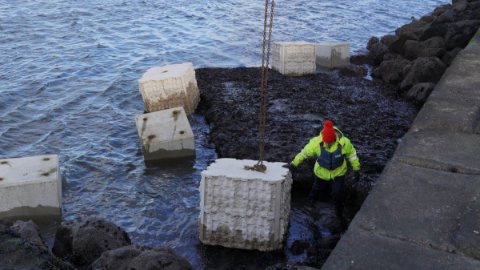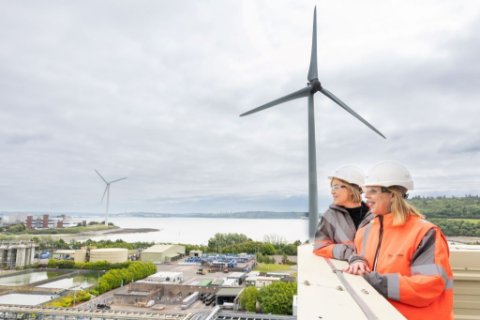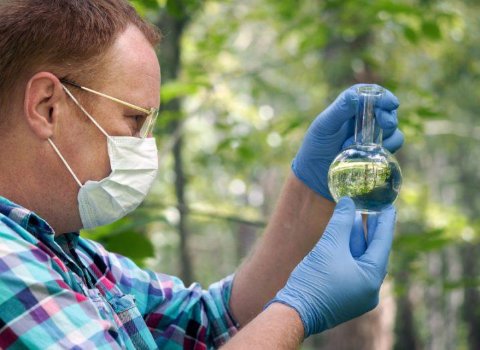Taking inspiration from the shores of Ringaskiddy in Co Cork, a UCD-led project aims to create a world-first in eco engineering along the shoreline of Dublin Port.
When construction was completed on the Great South Wall at Dublin Port more than 200 years ago, it was the world’s longest sea wall. Today, the nearly 5km long wall remains one of Europe’s longest of its kind. But its latest claim to fame has nothing to do with its length.
University College Dublin (UCD) and the Dublin Port Company are collaborating on a project that represents the first time researchers have emulated natural topography to create artificial structures around a sea wall to marry engineering with ecological best practice.
While human-made structures such as sea walls and rock armour are important for the protection of ports, harbours and marinas worldwide, they often lack the biodiversity that is found in natural rocky shores.
Now, this unique eco engineering project led by UCD researchers and Dublin Port is seeing the deployment of large habitat units along the Great South Wall that can potentially foster marine life along the coast. The 3D-printed units are inspired by the natural topography along the shores of Ringaskiddy, a village on the western side of Cork Harbour.
Dr Paul Brooks of the UCD School of Biology and Environmental Science said that the project – seven years in the making – represents a “significant step forward” in our understanding of eco engineering concepts.
“By incorporating natural topographies into artificial structures, we have the potential to mitigate environmental impacts while promoting ecological resilience along the Great South Wall,” he explained.
“The result you can now see along the Great South Wall is a world-first and we’re very excited to see it finally come to the fore. It would not be possible without the collaboration with Dublin Port, and we hope that continues long into the future.”
Over the next two years, UCD researchers will comprehensively monitor these habitat units to see how a diverse range of species – from invertebrates to fish – flourish in their presence.
The project draws from a comprehensive study conducted as part of the Ecostructure project that Dublin Port played a pivotal role in. It involved 32 natural rocky shores and 32 artificial shoreline sites across Ireland and Wales, evaluating both biological diversity and physical topography.
Using advanced techniques such as photogrammetry, the project team crafted 3D models to inform the development of engineering-standard habitat units and wall panels.
Eamon McElroy, the port engineer at the Dublin Port Company, said that it is important to take great care of the marine environment around the port, where around 8,000 ships arrive every year.
“It is our policy to manage our obligations to the environment in a responsible manner and to take a sustainable approach to developing the port’s business,” he said.
“The deployment of fish habitats along the Great South Wall, an iconic Dublin landmark, aims to enhance the biodiversity within the port estate itself. Through our joint efforts with UCD, we reaffirm our commitment to sustainable development and the preservation of marine ecosystems.”
Vish Gain
This article originally appeared on www.siliconrepublic.com and can be found here
When construction was completed on the Great South Wall at Dublin Port more than 200 years ago, it was the world’s longest sea wall. Today, the nearly 5km long wall remains one of Europe’s longest of its kind. But its latest claim to fame has nothing to do with its length.
University College Dublin (UCD) and the Dublin Port Company are collaborating on a project that represents the first time researchers have emulated natural topography to create artificial structures around a sea wall to marry engineering with ecological best practice.
While human-made structures such as sea walls and rock armour are important for the protection of ports, harbours and marinas worldwide, they often lack the biodiversity that is found in natural rocky shores.
Now, this unique eco engineering project led by UCD researchers and Dublin Port is seeing the deployment of large habitat units along the Great South Wall that can potentially foster marine life along the coast. The 3D-printed units are inspired by the natural topography along the shores of Ringaskiddy, a village on the western side of Cork Harbour.
Dr Paul Brooks of the UCD School of Biology and Environmental Science said that the project – seven years in the making – represents a “significant step forward” in our understanding of eco engineering concepts.
“By incorporating natural topographies into artificial structures, we have the potential to mitigate environmental impacts while promoting ecological resilience along the Great South Wall,” he explained.
“The result you can now see along the Great South Wall is a world-first and we’re very excited to see it finally come to the fore. It would not be possible without the collaboration with Dublin Port, and we hope that continues long into the future.”
Over the next two years, UCD researchers will comprehensively monitor these habitat units to see how a diverse range of species – from invertebrates to fish – flourish in their presence.
The project draws from a comprehensive study conducted as part of the Ecostructure project that Dublin Port played a pivotal role in. It involved 32 natural rocky shores and 32 artificial shoreline sites across Ireland and Wales, evaluating both biological diversity and physical topography.
Using advanced techniques such as photogrammetry, the project team crafted 3D models to inform the development of engineering-standard habitat units and wall panels.
Eamon McElroy, the port engineer at the Dublin Port Company, said that it is important to take great care of the marine environment around the port, where around 8,000 ships arrive every year.
“It is our policy to manage our obligations to the environment in a responsible manner and to take a sustainable approach to developing the port’s business,” he said.
“The deployment of fish habitats along the Great South Wall, an iconic Dublin landmark, aims to enhance the biodiversity within the port estate itself. Through our joint efforts with UCD, we reaffirm our commitment to sustainable development and the preservation of marine ecosystems.”
Vish Gain
This article originally appeared on www.siliconrepublic.com and can be found here



